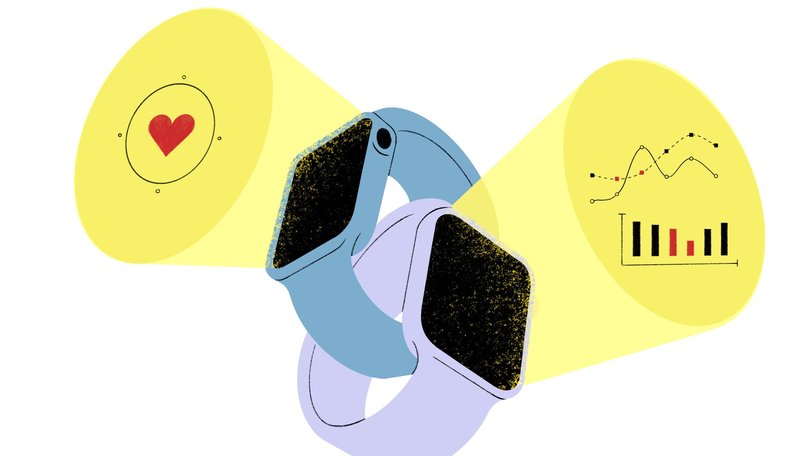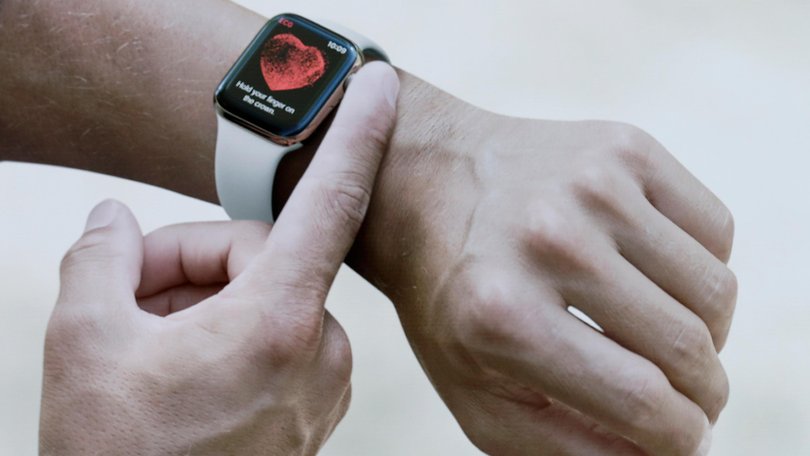WASHINGTON POST: The often-ignored smartwatch tool that can help you manage stress and improve heart health

Did you know there’s a number that might let you know how stressed you are, whether you have a cold coming on and how to get into the zone if you’re about to present at a big meeting?
You can find that number on most smartwatches or other wearables right now, but if you glance at yours, it’s likely to change before your eyes.
That number is your heart rate variability, or HRV, a measure of your autonomic nervous system’s resilience. It’s one of the most potentially beneficial health metrics available. But it’s also widely misunderstood. Many of us haven’t a clue what our HRV reading means or how to use it.
Sign up to The Nightly's newsletters.
Get the first look at the digital newspaper, curated daily stories and breaking headlines delivered to your inbox.
By continuing you agree to our Terms and Privacy Policy.Which is too bad, experts say, because research suggests HRV could predict mortality as we get older and help us bring our stress reactions under better control, whatever our age.
“HRV is very useful,” said Andy Galpin, executive director of the Human Performance Centre at Parker University in Dallas and a high-performance coach. “There’s a reason it’s on every wearable.”
The question is, is your HRV in good shape? And how can you make it better?
What is heart rate variability?
Heart rate variability isn’t about your heart, at least not much. It’s “a proxy of stress,” said Marco Altini, a researcher and the founder of HRV4training, which provides endurance coaching.
Technically, it’s the millisecond-by-millisecond change in the intervals between heart beats. If your heart rate right now is 90 beats per minute, those 90 beats aren’t spaced consistently. They’re syncopated, coming faster and slower every millisecond, depending on, well, “just about everything,” Mr Altini said.

That’s because HRV is “a reflection” of our autonomic nervous system, he said. The autonomic nervous system controls such involuntary processes as breathing and heart rate and is made up of the twitchy sympathetic nervous system, which causes high-alert, fight-or-flight reactions, and the parasympathetic nervous system — our inner Matthew McConaughey, which drawls at us to chill.
Both systems work with the brain to increase or lower heart rate and breathing and to coordinate the release of stress-related biochemicals but typically in opposite directions.
Ideally, these duelling systems interact and balance to keep our bodies ready to react but not overreact to every stress — including hunger, fatigue, worry, illness and exercise, but also cold, politics, deadlines, a car backfiring or almost anything else happening within and around us.
What is a good heart rate variability?
Heart rate variability “shows where you are in balance between parasympathetic and sympathetic drive,” Mr Galpin said. Generally, a “higher HRV is better.”
How much better? A small study of centenarians — people who lived to be at least 100 — showed that the higher their HRV, the longer they continued to live. Those with the lowest HRVs were far more likely to die in the coming year than the others.
“HRV seems to play a role in exceptional longevity,” the study’s authors concluded.
In general, a higher HRV indicates a healthier stress response, with more input from the parasympathetic than sympathetic system, said Dr Jay Wiles, a clinical psychologist, who uses HRV to help professional athletes and others with stress. A higher HRV suggests that your body is calm but alert, like a boxer bouncing from foot to foot. You’re ready to roll with whatever the world throws at you.
Normal HRVs can vary by a lot
But is your current HRV high enough? That question is surprisingly hard to answer.
Most wearables track HRV by measuring your heartbeat intervals in milliseconds, calculating differences from one beat to the next with a proprietary algorithm and graphing changes in your HRV over an hour, day, week, month or whatever. It then provides an average in milliseconds, such as 20, 50, 110 or some other.
That average changes frequently as your nervous system reacts to the world, but it usually stays within a somewhat narrow band, which would be your typical HRV.
Your usual HRV can be quite different from mine, though. In fact, the range of everyday HRVs can be staggeringly large, Mr Altini said. In the most comprehensive study yet of HRVs, people of all ages had average HRVs ranging from as low as 5 milliseconds among some people in their 60s to as much as 230 for some teenagers. Generally, HRV declines with age, but some of the oldest people in the study had HRVs above 80, while some teenagers had HRVs of about 10.
The average for people in their 30s was about 45 milliseconds, but the range for that age group was anywhere from 10 to more than 160 milliseconds.
How to find your typical HRV
Many people believe an HRV in the 20s or lower is cause for concern, Mr Altini said. He disagrees.
“There’s a strong genetic component,” he said. You may be born with a relatively low HRV, which is normal for you.
How can you know? The best way to find your unique HRV range is with several months’ worth of data from your smartwatch or other wearable, Mr Altini said. It’s best to use a long period because HRVs spike and drop precipitously during a single day, he said. A sudden loud noise might send it spiralling by 100 milliseconds before dropping back to your normal. So, knowing your average range over months gives you a baseline or benchmark of your typical HRV.
You can then use that information to track what’s up inside your body, Mr Galpin said. If your typical HRV abruptly drops by a large and lingering amount, at least 10 or 20 milliseconds for at least three to five days, that often signals that something is wrong. “Your body’s freaking out,” Mr Galpin said. Maybe you’re getting sick or, if you’re an athlete, overtraining, or you might be facing unusual strains at work. At any rate, a substantial, prolonged HRV decline is “worth paying attention to,” he said.
How to raise your heart rate variability
What can or should you do about a tumbling HRV?
“The goal isn’t to fix your HRV,” Dr Wiles said. The goal is to fix — or, at least, find and face — whatever is damping your HRV. Are you training for a marathon? Maybe lower your mileage for a day or two. Or check your temperature to determine whether you’re getting sick.
You can also work on becoming better able to handle stress in general. Meditation and slow, deliberate breathing tend to activate the parasympathetic nervous system, Dr Wiles said, which will usually result in heightened HRV, both immediately and long-term.
He also uses biofeedback with his clients, many of whom are professional athletes, to strengthen their stress resilience and, at the same time, raise their HRV. Prompted by an app on their phone or another screen, they breathe slowly and deeply, with about five seconds of inhaling and five seconds of exhaling, while watching a graph of their HRV. It should slowly rise.
This practice can help athletes and the rest of us learn to reach a state of flow, Dr Wiles said, of calm responsiveness even under stress. (If you want to try HRV-related biofeedback at home, he recommends the app HRV4Biofeedback, which was developed by Mr Altini. It requires only a smartphone, not a smartwatch, to measure HRV.)
Even more important is to look at your entire life, Mr Galpin said. If you’re not exercising, eating well and sleeping enough or if you smoke or drink heavily, your HRV will be lower than it should be.
“Remove those big health anchors,” he said, and your HRV will rise, as will your overall quality of life, which is, of course, the primary goal. HRV just marks your journey there, he said. “It’s the metric you watch to make sure your whole health program is actually working.”
(c) 2025 , The Washington Post
Originally published as This often-ignored smartwatch health metric can help you manage stress
